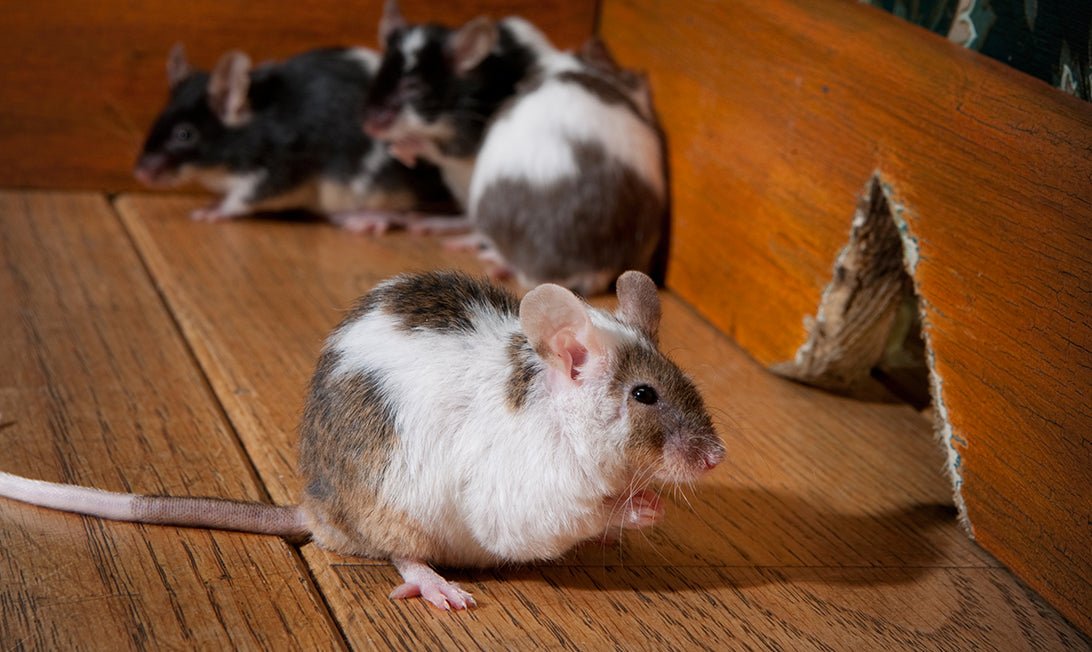
Mice infestations are an age-old issue that has plagued humans for thousands of years. Not only can mice infestations be unsettling, but they are also a health hazard.
When there is a trail of mouse droppings leading to the pantry, you are rightly concerned. Mouse droppings contain the major mouse allergen Mus m 1 (1). This causes hypersensitivity to IgE, causing allergies, and possibly asthma symptoms (2).
The effect of Mus m 1 is particularly devastating to children, with more than 40% of children ending up with persistent and uncontrolled asthma (3).
But how do you recognize mouse droppings? And what is the difference between mouse droppings and roach droppings?
How Do You Know If It's Mouse Droppings?
It can be difficult to identify mouse droppings from the dropping of another rodent or insect, but the size is key.
Mouse droppings tend to be around 6 mm in length, about the same size as a rice grain. This is much smaller than rat droppings, which are between 13 to 19 mm in length (4).
As mice are nocturnal, they can be challenging to spot. Droppings usually indicate that you have mice in your house, but you can also look for more evidence of a mouse infestation. This can include hearing scurrying in the roof or walls, gnaw marks, and holes in the pantry and some food. These signs, combined with the presence of droppings, show that you have some unwanted house guests (5).
Are Mouse Droppings Hard?
It is important to establish whether your house guests are new or if you are only finding evidence of mice that have left.
Determining the age of droppings is relatively simple and can be done by looking at the droppings.
Fresh mouse droppings tend to be black and wet-looking. They also have the consistency of play-dough and can be pressed out of shape. Fresh droppings indicate that your house guests are likely currently living in your home.
After several hours, the droppings become hard, and they look dry and lose color. These droppings easily crumble when pressed and can even look like they are covered in dust. In some cases, mold can develop on old droppings.
What Do Mice Droppings Look Like?
It is crucial to identify whether the droppings are left by rodents or insects.
One way to determine this is to look at the number of droppings. Mice poop a lot. Every day, mice can produce between 50 to 75 droppings. If you have many droppings in your pantry, then it is likely from mice. This can be especially true as you don’t usually just have a single mouse, but several living in your home (6).
Mouse droppings also have a particular shape. Mouse droppings tend to be tapered at each end like a grain of rice, with the middle being the widest part. Also, hair can become trapped in the droppings, which is a key indicator that it is a mouse rather than an insect (7).
The location is another indicator that you may have mice. Mice usually enjoy being around where there is food, such as kitchen cabinets and pantries. They also enjoy being in more confined areas, such as attics, basements, and crawl spaces (8).
Mouse Droppings Versus Roach Droppings
Unfortunately, figuring out whether you have mice or cockroaches can be difficult. Cockroach and mouse droppings can look similar.
However, if you look closely, there are some subtle differences. The size is an important indicator. Cockroach droppings are much smaller than typical mouse droppings, averaging about 1 mm in length. But what if you have large cockroaches or small mice (9)?
Another key characteristic of roach droppings is that they tend to have ridges that run along with the droppings, much like a small seed (10).
Fortunately, there are products to help you if you have an infestation of mice or cockroaches.
EcoClear’s MouseX® and Stop Bugging Me!™ work effectively, safely, and humanely to help eliminate your unwanted pests for good.
The Bottom Line
Discovering that you may have mice in your home is always distressing, especially when you find mice droppings on the pantry floor. It is important to figure out whether the cause is insects or mice.
Examining poop is generally the most accurate way to determine whether you’re dealing with insects or mice, especially when it comes to size.
If you have an infestation, EcoClear’s products are the best defense for you and your home.



